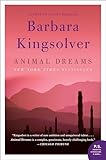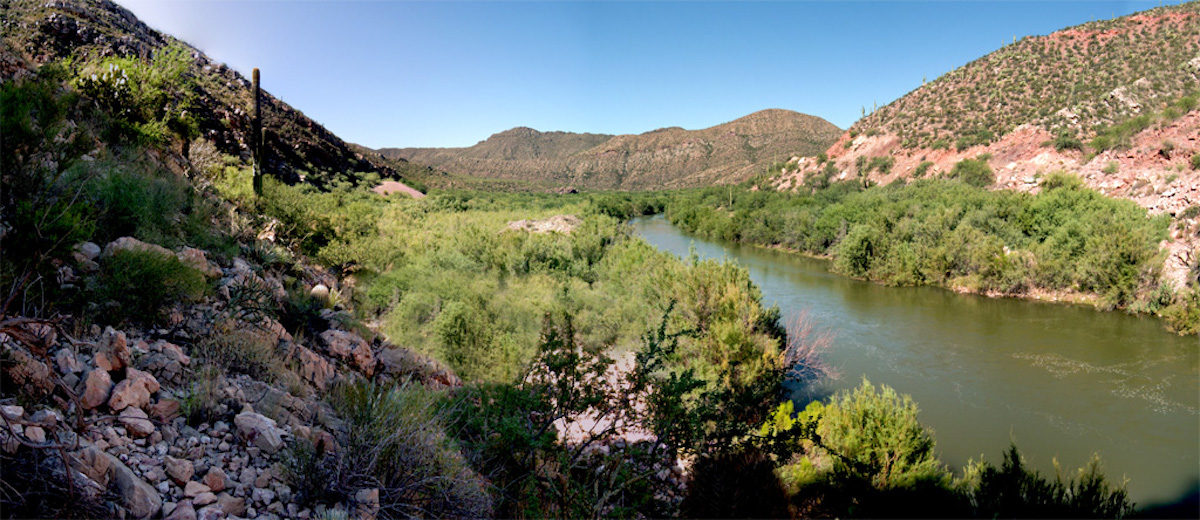There are so many ways for a nest to fail. So many ways for a sentence to fail. In my years as a field biologist I watched how the natural world dealt with the inevitability of failure—in life, mating, reproduction, predation. Unaware, I began to translate what I observed directly into my writing style.
One day on the Gila River I saw a bright green-blue snake slide through a willow with a flycatcher egg in its mouth. Endorphins flooding my body, I wrote about it right away, taking a seat on the sandy shore and jotting down a few winding versions of the event in my notebook. But nothing that I wrote rang quite right. I was too close to it, too amped up. It would only be later in the calm of my tent that I could process what I’d seen, reflect on it, and write. A little distance goes a long way.
The monsoons came fairly early that year I worked surveying breeding willow flycatchers via kayak on the Gila River in southeastern Arizona. After a particularly strong downpour I found three nestlings drowned in their own nest. When I tried to write about it, I found my syntax to be choppy and blunt. I wrote in the margins of my notebook, simply, they are gone. All dead. Again, I needed time to process what I’d seen.
The survival rate for songbird offspring is only about 30 percent, with large ranges within that statistic, of course. While doing nest monitoring on the Gila River, our crew monitored some 50-plus Southwestern willow flycatcher nests. At the time, this was a stronghold population for an ever-dwindling, federally endangered subspecies. Over and over in the course of just one field season we watched this struggling population build, lose offspring, rebuild, and try all over again. I wasn’t fully conscious of it at the time, but this kind of constant reminder of life’s fragility crept its way into my perspective and prose.
Before my time in the field, when I was in an MFA program at University of Washington in Seattle, I preferred to write emotional issues at an arm’s length. I laughed at death, turned to parables, fables, magical realism, or sprinkled in mythology. I had a hard time talking about things starkly. But after confronting loss in the animal realm on a daily basis, I began to feel used to it. Not immune, just accustomed. I felt my whole being shift as I realigned my perspective. I still enjoy all those modes, the mythological and magical realism in particular, but I no longer use them as shields.
When a nest fails, birds waste no time. They pick the pieces up and move on. A nest is repaired, a new clutch is laid, and they are on to the next plot point of their narrative. It is in this way that I began to write stories about loss—and then survival—with the particular lens of a biologist. The people in my novel began to share traits with some of the animals I observed. My characters knew how to pick up the pieces and march on into the future. They didn’t make a big deal of it when their whole life fell apart, but moved on because they had to. These people in my writing, you might say they were channeling their inner animal. And then all of a sudden I was one of them.
Summer monsoons swelled the normally laconic Gila River and because we kayaked to all the nest monitoring sites, we had to learn to navigate swollen waters, new eddies, and submerged snags. The current was fast then and could tip your boat in a matter of seconds. One day I found myself in a side channel of the river with my kayak upended, my head under water, and my leg pinned in the skein of a tree that had fallen into the river. The snag hadn’t been there the last time I shot down the channel and it had caught me off guard. I remember the moment as though etched into my mind. I thought, you have to get your leg out of this tree or you’re going to die. And then I thought, you’re not going to die, just do what you need to do. And so I went about extracting my leg from the snag, all while fully submerged in the muddy, rushing stream.
In less than a minute I was back up on the surface floating in the murky brown waters, clinging to the bank, not dead. In fact, I was very much alive. My boyfriend, now husband, had seen the whole thing and once he saw I was not, indeed, drowned, he raced off downstream to catch my kayak which had floated off without me. “So glad you aren’t dead,” he said to me. “Would have really messed up this season’s data,” I joked. We laughed about it, but I felt new. There is confidence born of surviving another day.
A different season when I was working in the Chihuahuan grasslands of northern Mexico, I started to observe the way coyotes ran at full speed in parallel formation—together, but separate. They were able to be alone but together, a trait I admire to this day in any animal. The bison were more social. They might have been collecting around the water cooler, the way they stood around pawing in the dust, shooting the breeze all day. Javelinas, however, were total party animals. At night they gathered en masse at their wallows and rolled the night away in the mud and the bare earth. The javelina, they say, wears high heels and that’s why its tracks are so dainty. But these Javelina get-togethers were clearly anything but dainty. I never saw the moonlight javelina bacchanal, and I always wanted to, but I could track their gatherings by noting the way overnight they had shifted great mounds of earth with their bodies, uprooting the shrubs, altering the landscape, and making their mark. It occurred to me that there are as many personalities, as many social constructs, in the animal kingdom as there are in the human realm.
There was a pair of star-crossed sparrows wintering in the grasslands that every day I looked forward to observing. Each time I would locate one particular radio-tagged vesper sparrow, it would flush from the grass with a grasshopper sparrow close behind. There was a predictable, bodice-ripping arc to the whole thing—the telemetry signal beeps getting closer and closer together as I approached the tagged bird, the mechanical heartbeat flooding with faux endorphins. The winter was soon to end, though, and in the spring the two birds would have to fly back to their separate Midwestern breeding grounds and settle back into domestic, single-species mating rituals again. At the end of the day I wrote about these birds in my journal, anthropomorphizing with abandon. They were Romeo and Juliet, Abelard and Heloise, never meant to be. What happens in the Chihuahuan Desert stays in the Chihuahuan desert.
Each new biome touched my vocabulary, syntax, and sentence structure. In radio telemetry a field tech uses headphones and an antennae to relocate a tagged animal, and as one closes in the beeps come closer together, and louder. After a long day of doing telemetry I also found myself writing short staccato paragraphs with sentences of even length that ended in more punctuated and faster, shorter sentences. How easily the mind is influenced by its environment. How quickly we imitate how we are socialized.
The greatest shift in my animal self, in my animal writer, was when I became a new mom. A new softness crept into my prose, but it was edged by difficulty. I ended up in the ICU for a couple days after my first birth, recovering from an extra emergency surgery and a blood transfusion. In the following months I had bumped up against the idea of death and yearned for mundanity. My recovery was fairly quick and so I felt eager to return to normal, to feel trivial again. But there had been yet another shift in myself and how I chose to write. It was as if the softening of my connective tissue and joints that accompanies new motherhood also found its way into my words.
I returned to the field when my first was eight months old. My husband and I both worked 12 hour days and with some amount of guilt we put our baby into a rural daycare that fed him a steady stream of sugar cookies and Dora the Explorer. I pumped breast milk in the field in 110-degree heat and kept it in a cold pack on my hip. I lost 20 pounds in a few weeks. He survived, we survived, and there will be a story for him when he’s older, a gauzy, shimmering mirage of an origin story. There are always hurdles in the first year of parenting, and ours just involved stumbling through prairie dog towns in the desert and mist-netting wild birds rather than juggling playdate schedules and nanny-shares.
 As Barbara Kingsolver said in Animal Dreams, “We’re animals. We’re born like every other mammal and we live our whole lives around disguised animal thoughts.” When I finally wrote my novel, I took this idea to heart. I wrapped the scientist, the mother, the writer, all together. I bundled her up and packed her through the desert, through a grassland, and down a swollen stream in order to try and understand in some small way what living as a human animal is all about.
As Barbara Kingsolver said in Animal Dreams, “We’re animals. We’re born like every other mammal and we live our whole lives around disguised animal thoughts.” When I finally wrote my novel, I took this idea to heart. I wrapped the scientist, the mother, the writer, all together. I bundled her up and packed her through the desert, through a grassland, and down a swollen stream in order to try and understand in some small way what living as a human animal is all about.
Image Credit: Flickr/Alan Stark.










